Abstract
Inverse topological index problems involve determining whether a graph exists with a given integer as its topological index. One such index, the Mostar index, , is defined as where and represent the number of vertices closer to vertex u than v and closer to v than u, respectively, for an edge . The inverse Mostar index problem has gained significant attention recently. In their work, Alizadeh et al. [Solving the Mostar index inverse problem, J. Math. Chem. 62 (5) (2024) 1079–1093] proposed the following open problem: “Which nonnegative integers can be realized as Mostar indices of c-cyclic graphs, for a given positive integer c?”. Subsequently, one of the present authors [On the inverse Mostar index problem for molecular graphs, Trans. Comb. 14 (1) (2024) 65–77] conjectured that, except for finitely many positive integers, all other positive integers can be realized as the Mostar index of a c-cyclic graph, where . In this paper, we address the inverse Mostar index problem for c-cyclic graphs. Specifically, we construct infinitely many families of symmetric c-cyclic structures, thereby demonstrating a solution to the inverse Mostar index problem using an infinite family of such symmetric structures. By providing a comprehensive proof of the conjecture, we fully resolve this longstanding open problem.
MSC:
92E10; 05C92; 05C09; 05C35
1. Introduction
Let be a simple, connected graph with vertex set and edge set . For , the length of the shortest path between the vertices u and v is their distance, . Let be an edge of the graph G (which may contain cycles or be acyclic), connecting the vertices u and v. Define two sets and as
The number of elements of and is denoted by and , respectively. Thus, counts the vertices of G lying closer to the vertex u than to vertex v. The meaning of is analogous. Vertices equidistant from both ends of the edge belong neither to nor to . Note that for any edge of G, and , because and .
Topological indices are numerical quantities associated with graphs that remain invariant under graph isomorphisms. The Mostar index, introduced in [1], is a recently developed bond-additive topological index. The Mostar index is defined as
We use the notation to represent the contribution of the edge to the Mostar index. Thus, we have
In recent years, numerous studies have explored the Mostar index and its associated variants. For further literature on the subject, see [1,2,3,4,5,6,7,8,9].
The inverse topological index problem involves the realization of integers as topological indices within various classes of graphs. It is closely related to several similar problems in other fields [10]. The first version of this problem was introduced by Gutman in [11], and since then, several variants have been investigated for different topological indices [12,13,14,15,16,17,18]. Recently, the inverse Mostar index problem for various classes of graphs has been studied extensively [12,13,19]. In [19], Alizadeh et al. proposed the following problem on inverse Mostar index for c-cyclic graphs.
Problem 1.
Which nonnegative integers can be realized as Mostar indices of c-cyclic graphs, for a given positive integer c?
This problem was thoroughly resolved for c-cyclic graphs when in [12,13,14]. Building on these findings and after an in-depth study of Problem 1 as discussed in [12], one of the present authors proposed the following conjecture concerning the inverse problem of the Mostar index for c-cyclic graphs.
Conjecture 1.
For any fixed , there exists a c-cyclic graph with the Mostar index , where , and A is a finite set.
In this paper, we address the inverse Mostar index problem for c-cyclic graphs. Specifically, we construct infinitely many families of symmetric c-cyclic structures, providing a solution to the inverse Mostar index problem through an infinite family of such symmetric graphs. Specifically, for each given Mostar index value, we systematically design a corresponding family of symmetric c-cyclic graphs that realize this index, ensuring that every possible target value has at least one structural realization. By utilizing symmetry properties and cyclic arrangements, we generate these graph families with a consistent and reliable construction. This approach not only offers a constructive solution to the inverse Mostar index problem but also highlights the intricate relationship between graph symmetry and topological indices, providing deeper insights into the role of cyclic structures in shaping graph invariants. By providing a comprehensive proof of Conjecture 1, we fully resolve this longstanding open problem, Problem 1.
2. Main Results
In this section, we provide a complete resolution of Problem 1 by proving Conjecture 1. We use the following constructions to prove the result. In each case, we present multiple constructions to address both Conjecture 1 and Problem 1. We begin by examining the case of c-cyclic graphs when c is even.
- Construction I. Consider a cycle of length . Starting from , for each path of length 2 in C, take a vertex and form a 4-cycle by attaching the edges and for . Next, starting from , take the path and a new vertex , forming a 4-cycle by attaching the edges and for . Let the resultant graph be denoted by (see, Figure 1). In , let denote the 4-cycle containing the vertex . Now, let (see, Figure 1) be the graph obtained by inserting a new edge between the cycles & , and & in C (or by subdividing the edges and ). Relabel the vertices of the cycle C as . Proceeding in this manner, let denote the graph obtained from by inserting a new edge between the cycles & , and & in C (or by subdividing the edges and k-times in ). Clearly, is a c-cyclic graph with vertices and edges, while is a c-cyclic graph with vertices and edges. In all the graphs considered, let denote the edge connecting the vertices and , where . Similarly, let denote the edge connecting the vertices and , where .
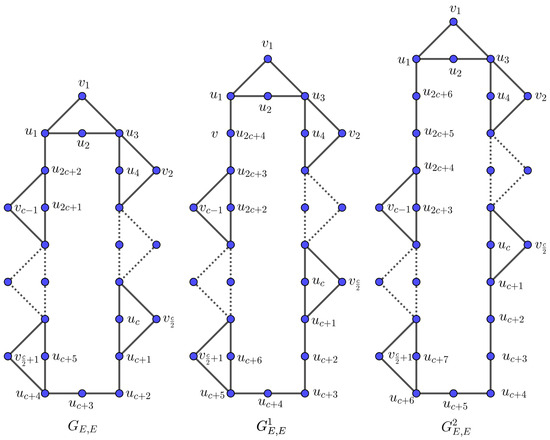 Figure 1. The graphs mentioned in Construction I.
Figure 1. The graphs mentioned in Construction I.
Proposition 1.
For an even , , and .
Proof.
In , consider any 4-cycle . For the edges and , we obtain
Therefore, there are exactly two edges with the contribution
For the other two edges and , the following holds:
Therefore, these two edges have the contribution
Next, we consider any 4-cycle . For the edges and , we obtain
Therefore, there are exactly two edges with the contribution
For the other two edges and , the following holds:
Therefore, these two edges have the contribution
For all the remaining edges of ,
Therefore, these edges have the contribution
Using the above results, from (2), we obtain
In , the contribution of a new edge is calculated as follows:
For each of the other edges , the contribution is
This means that all the other edges have the same contribution as in . Therefore,
Similarly, in and , all the edges except the new edges have the same contribution. The two new edges in each have a contribution . Thus, it follows that
In a similar manner, we can establish
□
We can also provide several classes of constructions to obtain the same value of the Mostar index as in Proposition 1. A general version of the construction is as follows.
- General Construction I. Consider the base graph as in Construction I. For , let and be vertices positioned between the 4-cycles and , respectively. Define as the graph obtained from by deleting the edges and , subdividing the edges and , relabeling the vertices of the cycle C as , and adding an edge between and . This effectively inserts an edge between the cycles and in C. Proceeding iteratively, define (see, Figure 2) as the graph obtained from by subdividing the edges and , thereby inserting k edges between the cycles and . At each step, relabel the vertices of C in . Clearly, is a c-cyclic graph with vertices and edges for each .
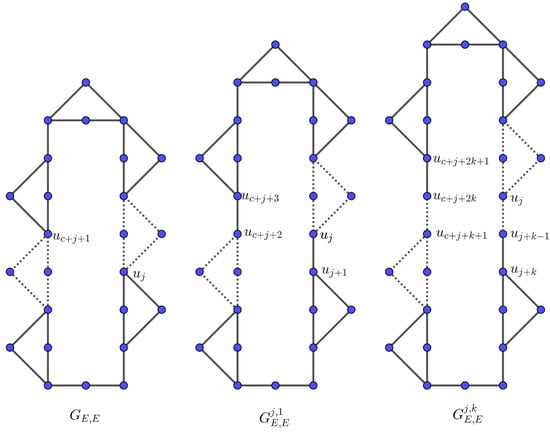 Figure 2. The graphs mentioned in General Construction I.
Figure 2. The graphs mentioned in General Construction I.
Proposition 2.
For each fixed even integer , , where and .
Proof.
From direct computation in , the contribution of the new edges is 1 each, and the contribution of every other edge remains the same as in . Therefore,
□
- Construction II. Consider a cycle of length . Select the vertex and its diametrically opposite edge in C. From the path in C, attach the end vertices and to a new vertex , forming a 4-cycle . Additionally, attach a pendant edge at . Starting from , for each path of length 2 with , take a new vertex and attach and to to form a 4-cycle. Similarly, starting from , for each path of length 2 with , take a vertex and attach and to to form a 4-cycle. The resulting graph is denoted by , which is a c-cyclic graph with order and size (see, Figure 3). Let the 4-cycle in containing the vertex be denoted as , for . Define (see, Figure 3) as the graph obtained from by subdividing the edge and attaching a new edge between the cycles and , relabeling the vertices of C as . Next, let (see, Figure 3) be the graph obtained from by inserting a new edge between the cycles , and another edge between . Proceeding iteratively, define as the graph obtained from by inserting edges between the cycles , and between . Clearly, is a c-cyclic graph with vertices and edges for each . In all these graphs, let denote the edge connecting the vertex and , where and denote the edge connecting the vertex and , where .
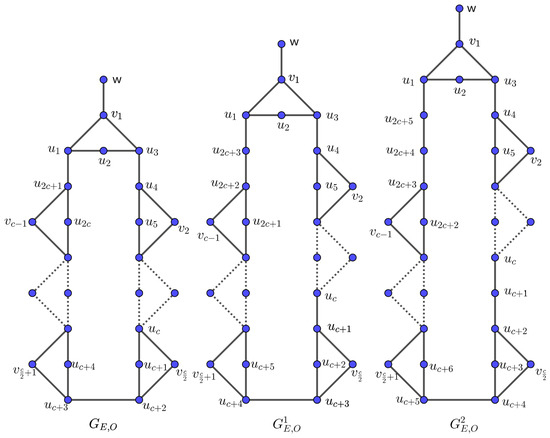 Figure 3. The graphs mentioned in Construction II.
Figure 3. The graphs mentioned in Construction II.
Proposition 3.
For an even , , and , .
Proof.
Since has vertices, the pendant edge has the contribution . Now, in the cycle , for the edges and , we have
There are exactly two edges with the contributions , and for the other two edges and , we have
Therefore,
Similarly, in , there are two edges, and , with
Therefore, the contribution is
and for the other two edges, and , we have
Thus, the contribution is
Similarly, in , there are two edges, each incident at , with the contribution and the other two edges incident at have the contribution . For the remaining cycles , for the edges and , we have
Therefore,
Now, for the edge , we have
and for the edge , we have
Therefore,
Similarly, on the cycle , where , for the edge , we have
and for the edge , we obtain
Therefore, . For the other two edges, , we have
and for the edge , we obtain
Therefore, . Now, for the edges and , the contribution is
and the remaining edge has the contribution . Using the above results, from (2), we obtain
In and , the pendant edges contribute and , respectively. Two new edges in each contribute to the Mostar index. For the remaining edges of , we have
Therefore, the remaining edges of and contribute the same amount. Thus, we conclude that
□
We can also provide several classes of constructions that yield the same value of the Mostar index as in Proposition 3. A general version of the construction is as follows.
- General Construction II. Consider the base graph as described in Construction II. For , let and be vertices such that lies between the 4-cycles and , and lies between the cycles and . Define as the graph obtained by deleting the edges and , subdividing the edges and , relabeling the vertices of C as , and adding edges and . This process effectively connects the cycles and , as well as and , through the newly added edges. Proceeding iteratively, let denote the graph obtained by subdividing the edges and of exactly once, or equivalently, inserting edges between the cycles and , and between and in C of , like in Figure 2. After each step, relabel the vertices of the cycle C in . Clearly, is a c-cyclic graph with vertices and edges, where and .
Proposition 4.
For every fixed even integer , where and .
Proof.
In and , the pendant edges contribute and , respectively. Two new edges in each contribute to the Mostar index. The remaining edges of and contribute the same amount. Therefore, . □
Next, we consider the case when c is odd.
- Construction III. Consider a cycle of length . Add a vertex and connect it to and to form a 3-cycle . For each path in C where , introduce a vertex and connect it to and , forming a 4-cycle . Let the resultant graph be denoted as (see, Figure 4). Define as the 3-cycle , and for , let denote the 4-cycle containing the vertex . Now, construct (see, Figure 4) from by deleting the edge , subdividing the edges and , relabeling the vertices of C as , and adding the edge . Alternatively, this can be described as inserting a new edge between the cycles and , as well as between and in C. Proceeding recursively, is obtained from by inserting new edges between and , and between and in C, or equivalently by subdividing the edges and exactly once, or by subdividing the edges and in exactly times. Clearly, is a c-cyclic graph of the order and size , while is a c-cyclic graph of the order and size for . In all these graphs, let denote the edge connecting vertices and (where ), and let denote the edge connecting and (where ).
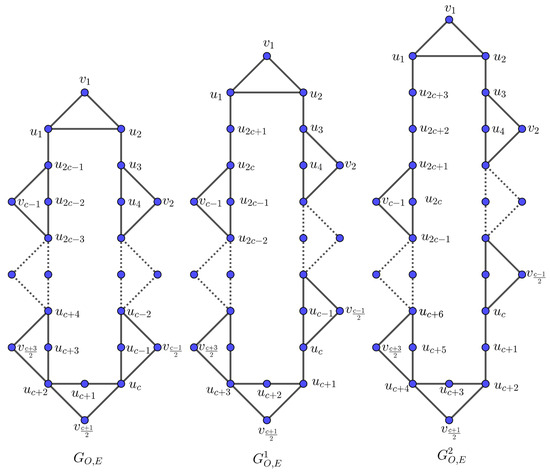 Figure 4. The graphs mentioned in Construction III.
Figure 4. The graphs mentioned in Construction III.
Proposition 5.
For an odd , , and , .
Proof.
In , two edges and contribute the following:
The edge contributes
In each of the cycles for where , two edges and contribute the following:
Therefore, the contribution of these two edges are
For the edges, and , we have
Thus, the contributions of these two edges are . In , each of the four edges contributes:
Therefore, each of these four edges contributes
The remaining edges in have zero contribution. Using the above results, from (2), we obtain
In and , two edges and contribute
The edge contributes . Two new edges have the contribution . For all remaining edges in , we have
Therefore,
Thus, all the remaining edges of have the same contribution as in . Consequently,
□
We can also provide several classes of constructions to obtain the same value of the Mostar index as in Proposition 5. A general version of the construction is as follows.
- General Construction III. Consider the base graph as in Construction III. For , consider the vertices and . The vertex lies between the 4-cycles and , while lies between the cycles and . For each , let be the graph obtained by deleting the edges and , subdividing the edges and , relabeling the vertices of C as , and attaching the edges and (or equivalently, adding an edge between the cycles and , as well as between the cycles and ). Proceeding in this manner, let be the graph obtained by subdividing the edges and of exactly once (or equivalently, inserting edges between the cycles and , as well as between the cycles and in ). At each step, relabel the vertices of the cycle C in . Clearly, is a c-cyclic graph with vertices and edges, where and .
Proposition 6.
For every fixed odd integer , , where and .
Proof.
In and , the two edges and contribute
and
The edge contributes . Two new edges have the contribution . All remaining edges in have the same contribution as in . Therefore, . □
- Construction IV. Consider a cycle of length , where c is odd. Introduce a vertex and connect and to form a 3-cycle . For each path in C starting from and incrementing by 2, add a vertex , and connect and to form a 4-cycle for . Similarly, for , add a vertex , and connect and to form a 4-cycle . Denote the resulting graph by . Let denote the 3-cycle , and let denote the 4-cycle containing for . Define as the graph obtained from by deleting the edge and subdividing the edges and exactly once. Relabel the vertices of C as , and reattach the edge (or insert a new edge between the cycles and in C, and another new edge between and in C). Iteratively, define as the graph obtained from by inserting new edges between and and between and , or equivalently, by subdividing the edges and of exactly once. Thus, is a c-cyclic graph of the order and size , and is a c-cyclic graph of the order and size for . In these graphs, let denote the edge connecting and (where ), and denote the edge connecting and (where ).
Proposition 7.
For an odd , , and , .
Proof.
In the cycle , two edges incident on have the contribution
The remaining edge in the cycle, has the contribution:
Now, except for the cycle , in all other cycles (for ), we have the following contributions for the edges and :
For the edges and , we have
Therefore, all four edges have the contribution each. For , the edges and , we have
For the edges and , we have
Therefore, all four edges have the contribution . In , two edges, and , have the contributions
The other two edges, and , have the contributions
Among the remaining edges,
Using the above results, from (2), we obtain
In and , the edges incident on contribute
and
respectively. Two new edges in each contribute to the Mostar index. For the remaining edges of and , we have
Therefore, the remaining edges of and have the same contribution. Thus, . □
We can also provide several classes of constructions for obtaining the same value of the Mostar index as in Proposition 7. A general version of the construction is as follows.
- General Construction IV. Consider the base graph as in Construction IV. For , consider the vertices and . Then, is in between the 4-cycles and , and is in between the cycles and . Now, for each , let be the graph obtained by deleting the edges , and subdividing the edges , , and relabeling the vertices of C as . Also, attach the edges and (or add an edge between the cycles , and , in C). Proceeding in this manner, let be the graph obtained by subdividing the edges , of exactly once (or inserting edges between the cycles , and , in C of ). As shown in Figure 2, in each of the steps, relabel the vertices of the cycle C in . Clearly, is a c-cyclic graph with vertices and edges, where and .
Proposition 8.
For every fixed odd integer , , where and .
Proof.
In and , the edges incident on contribute
and
respectively. Two new edges in each contribute to the Mostar index. The remaining edges have the same contribution in as in . Therefore, . □
Using these constructions, we are ready to resolve Problem 1 by proving Conjecture 1. The proof of Conjecture 1 is as follows. Here, we denote as the set of non-negative integers, and the set of integers is represented by the letter .
Theorem 1.
For any fixed , there exists a c-cyclic graph with the Mostar index , where , and A is given by when c is even, and when c is odd, with
Proof.
We consider the following two cases:
- Case 1: is even. The graph (see, Figure 1) is a c-cyclic graph (even ) described in Construction I. According to Proposition 1, we haveFrom the above, we conclude that every even number greater than or equal to can be the Mostar index of some c-cyclic graph for every fixed c (even ). Thus we have , where k is a positive integer with (even ).The graph (see, Figure 3) is a c-cyclic graph (even ) described in Construction II. According to Proposition 3, we haveFrom the above, we conclude that every odd number greater than or equal to can be the Mostar index of some c-cyclic graph for every fixed c (even ). Thus we have , where k is a positive integer with (even ).For the c-cyclic graph for every fixed c (even ), we obtain , where , and A is given bywith
- Case 2: is odd. The graph (see, Figure 4) is a c-cyclic graph (odd ) described in Construction III. According to Proposition 5, we haveFrom the above, we conclude that every even number greater than or equal to can be the Mostar index of some c-cyclic graph for every fixed c when c is odd. Thus we have , where k is a positive integer with (c is odd).The graph (see, Figure 5) is a c-cyclic graph (odd ) described in Construction IV. According to Proposition 7, we haveFrom the above, we conclude that every odd number greater than or equal to can be the Mostar index of some c-cyclic graph for every fixed c when c is odd. Thus we have , where k is a positive integer with (odd ).
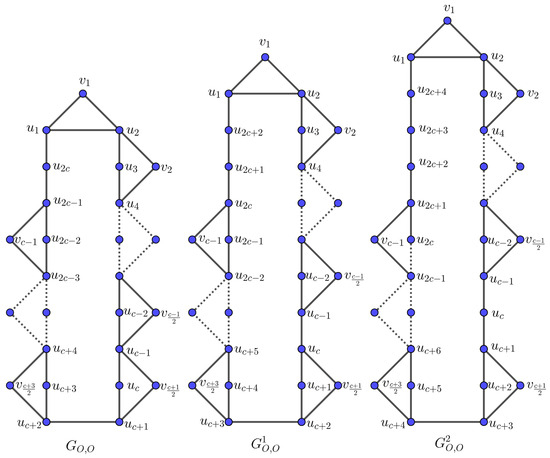 Figure 5. The graphs mentioned in Construction IV.For the c-cyclic graph for every fixed c (odd ), we obtain , where , and A is given bywith
Figure 5. The graphs mentioned in Construction IV.For the c-cyclic graph for every fixed c (odd ), we obtain , where , and A is given bywith
This completes the proof of the theorem. □
Remark 1.
Using Theorem 1, we provide a solution to Problem 1.
Using Theorem 1, we can also solve the inverse Mostar index problem for connected graphs.
Corollary 1.
For every positive integer , there exists a graph G with the Mostar index .
Proof.
For , from Theorem 1, we have
that is,
Similarly, for , from Theorem 1, we have
This completes the proof of the result. □
Remark 2.
We can also prove Theorem 1, using General Constructions I, II, III, and IV and Proposition 2, Proposition 4, Proposition 6, and Proposition 8.
3. Conclusions
Several variants of the Mostar index have been proposed recently, including the edge Mostar index , the total Mostar index , and the total edge Mostar index [3]. For a graph G, these indices are defined as follows:
where is the number of edges closer to u than to v, and similarly for . In this paper, we have resolved an open problem and conjecture related to the inverse Mostar index problem for c-cyclic graphs with . Despite this significant progress, several open problems remain in this area. For instance, the inverse edge Mostar index problem for c-cyclic graphs with has yet to be explored. Additionally, the infinite realizability of odd integers for both the Mostar index and the edge Mostar index remains an open question. Future research opportunities include addressing analogous problems for other bond-additive indices, such as the total Mostar index and the total edge Mostar index. These extensions represent promising directions for further studies in this field.
Author Contributions
Conceptualization, L.A. and K.C.D.; investigation, L.A. and K.C.D.; writing-original draft preparation, L.A. and K.C.D.; writing-review and editing, L.A. and K.C.D.; project administration, L.A. and K.C.D. All authors have read and agreed to the published version of the manuscript.
Funding
This research received no external funding.
Data Availability Statement
No new data were created or analyzed in this study.
Conflicts of Interest
The authors declare no conflicts of interest.
References
- Došlić, T.; Martinjak, I.; Škrekovski, R.; Spužević, S.T.; Zubac, I. Mostar index. J. Math. Chem. 2018, 56, 2995–3013. [Google Scholar] [CrossRef]
- Alex, L.; Indulal, G. Sharp bounds on additively weighted Mostar index of cacti. Commun. Comb. Optim. 2024. [Google Scholar] [CrossRef]
- Ali, A.; Došlić, T. Mostar index: Results and perspectives. Appl. Math. Comput. 2021, 404, 126245. [Google Scholar] [CrossRef]
- Deng, K.; Li, S. Chemical trees with extremal Mostar index. MATCH Commun. Math. Comput. Chem. 2021, 85, 161–180. [Google Scholar]
- Sigarreta, J.M. Mathematical properties of variable topological indices. Symmetry 2020, 13, 43. [Google Scholar] [CrossRef]
- Tepeh, A. Extremal bicyclic graphs with respect to Mostar index. Appl. Math. Comput. 2019, 355, 319–324. [Google Scholar] [CrossRef]
- Wiener, H. Structural determination of paraffin boiling points. J. Am. Chem. Soc. 1947, 69, 17–20. [Google Scholar] [CrossRef] [PubMed]
- Todeschini, R.; Consonni, V. Molecular Descriptors for Chemoinformatics; Wiley-VCH: Weinheim, Germany, 2009. [Google Scholar]
- Trinajstić, N. Chemical Graph Theory, 2nd ed.; CRC Press: Boca Raton, FL, USA, 1992. [Google Scholar]
- Fraser, D.A. On fiducial inference. Ann. Math. Stat. 1961, 32, 661–676. [Google Scholar] [CrossRef]
- Gutman, I.; Yeh, Y.N. The sum of all distances in bipartite graphs. Math. Slovaca. 1995, 45, 327–334. [Google Scholar]
- Alex, L.; Gutman, I. On the inverse Mostar index problem for molecular graphs. Trans. Comb. 2024, 14, 65–77. [Google Scholar]
- Alex, L.; Indulal, G.; Mulloor, J.J. On the inverse problem of some bond additive indices. Commun. Comb. Optim. 2024. [Google Scholar] [CrossRef]
- Alex, L.; Indulal, G. Inverse problem for Mostar index of chemical trees and unicyclic graphs. Palest. J. Math. 2024, 13, 56–64. [Google Scholar]
- Dimitrov, D.; Stevanović, D. On the σt-irregularity and the inverse irregularity problem. Appl. Math. Comput. 2023, 441, 127709. [Google Scholar] [CrossRef]
- Gutman, I.; Togan, M.; Yurttas, A.; Cevik, A.S.; Cangül, I.N. Inverse problem for sigma index. MATCH Commun. Math. Comput. Chem. 2018, 79, 491–508. [Google Scholar]
- Maji, D.; Ghorai, G.; Mahmood, M.K.; Alam, M.A. On the inverse problem for some topological indices. J. Math. 2021, 2021, 9411696. [Google Scholar] [CrossRef]
- Yurtas, A.; Togan, M.; Lokesha, V.; Cangül, I.N.; Gutman, I. Inverse problem for Zagreb indices. J. Math. Chem. 2019, 57, 609–615. [Google Scholar] [CrossRef]
- Alizadeh, Y.; Bašić, N.; Damnjanović, I.; Doxsxlić, T.; Pisanski, T.; Stevanović, D.; Xu, K. Solving the Mostar index inverse problem. J. Math. Chem. 2024, 62, 1079–1093. [Google Scholar] [CrossRef]
Disclaimer/Publisher’s Note: The statements, opinions and data contained in all publications are solely those of the individual author(s) and contributor(s) and not of MDPI and/or the editor(s). MDPI and/or the editor(s) disclaim responsibility for any injury to people or property resulting from any ideas, methods, instructions or products referred to in the content. |
© 2025 by the authors. Licensee MDPI, Basel, Switzerland. This article is an open access article distributed under the terms and conditions of the Creative Commons Attribution (CC BY) license (https://creativecommons.org/licenses/by/4.0/).